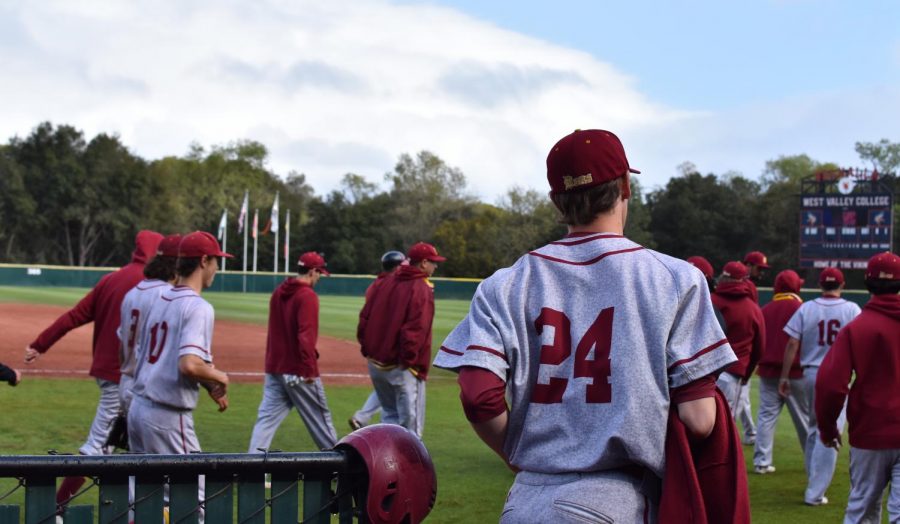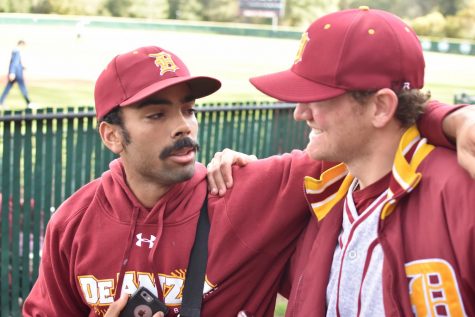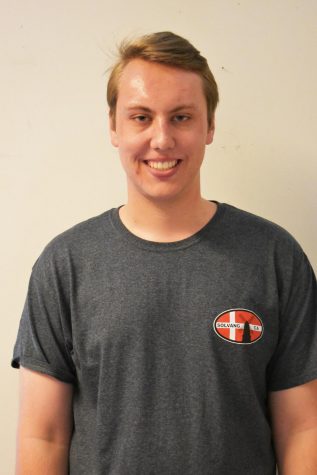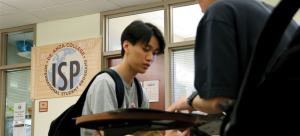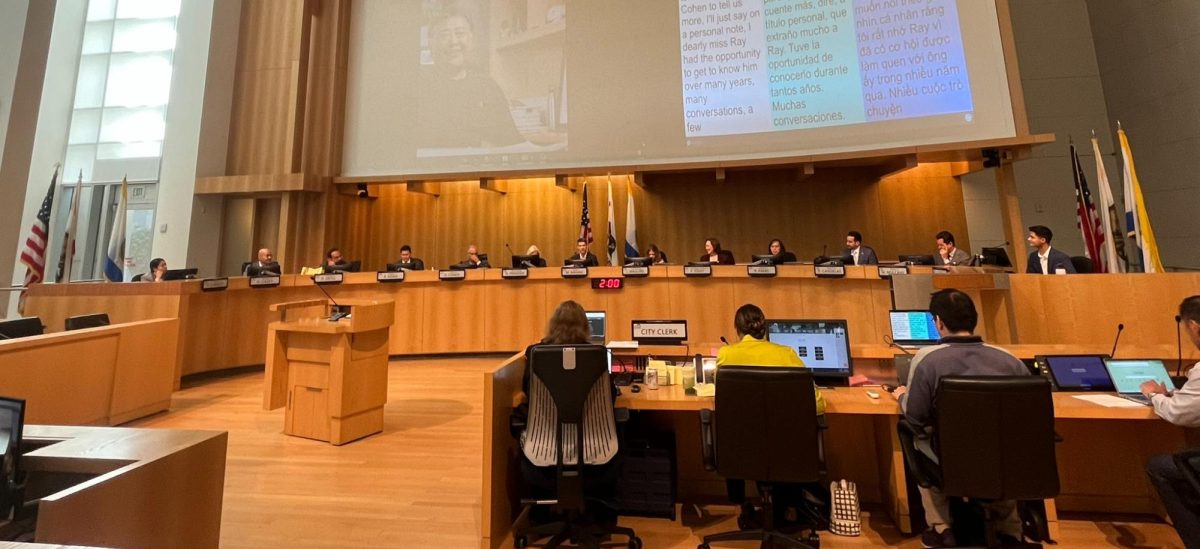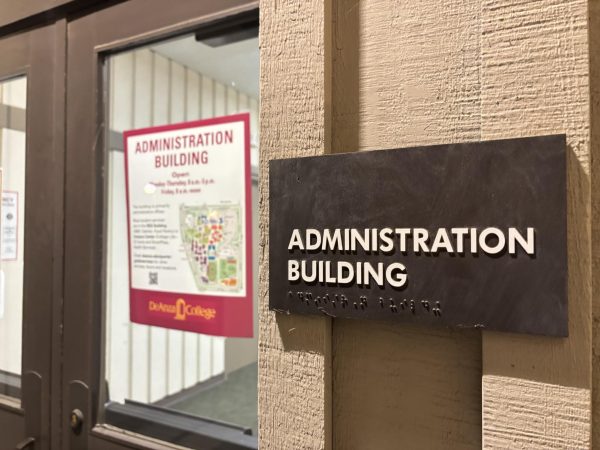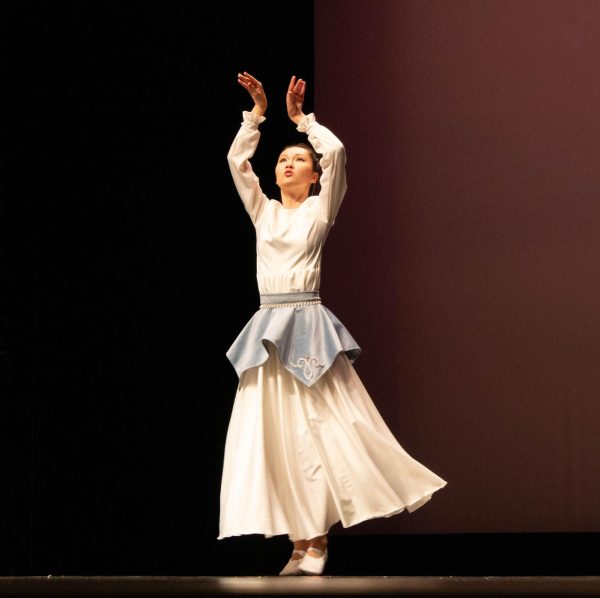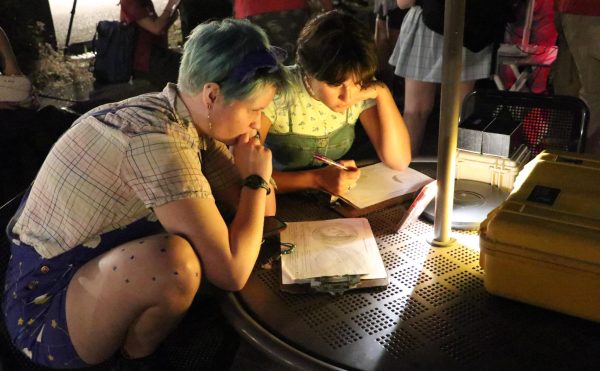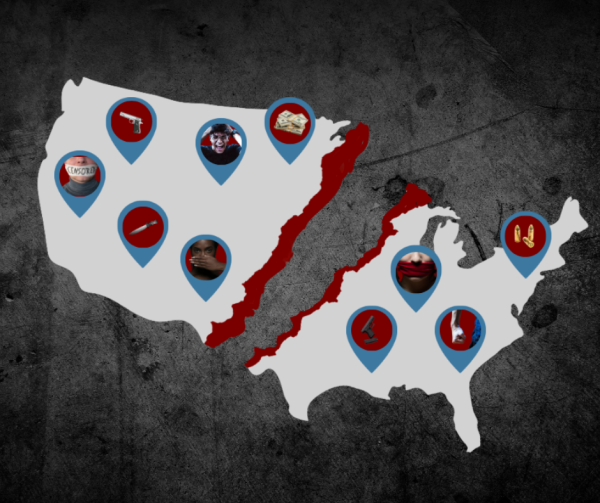Field of broken dreams: De Anza College baseball team seeks answers
A $1.2 million renovation gone awry leaves the De Anza College baseball team without a home field or their beloved head coach
March 18, 2018
Friday, Feb. 23 was supposed to be the dawn of a new day for De Anza College’s baseball program. Instead, fallout from the day’s events has left the team without a home field, fighting for answers from both administration and athletics personnel.
That Friday, the baseball team was cleared to visit its new field for the first time, the day before Folsom Lake Junior College would come to play two games against the Dons.
Since commencement of the field’s construction in July 2017, none of the baseball staff had access to the field in any capacity that administration is “aware of or would have permitted,” according to a March 15 email from Pam Grey, Associate Vice President of College Operations.
None of the baseball staff — including head coach Erick Raich, now on leave — was permitted to access the field, even to assess whether it was safe and playable, before Feb. 23.
None of the baseball staff was involved in the decision to open the field to play the double-header scheduled for Feb. 24; according to Grey, the final approval was left up to “architect [Devin Conway of Verde Design, Inc.], contractor [Bothman Construction], FHDA project manager, AVP of college operations at DAC [Pam Grey], and the DAC athletic director [Kulwant Singh].”
After a year and a half with no home field, the team was prepared to play elsewhere; Menlo College had agreed to host them on Feb. 23 and 24.
After significant delay of the field’s opening due to concerns about grass not taking root, per a March 8 email to parents from Associate Vice President of Communications and External Relations Marisa Spatafore, the field “was released for the single game of Feb. 24. The only remaining issue was the effect of play on the not-yet-fully rooted grass, which was to be assessed after the initial game.
“At that point, the grass was not a player safety issue — again, it was determined by the contractor to be safe — but a facilities issue.”
In an email to relevant staff on Feb. 22, Grey stated that “we have agreed that the baseball team will only play games on the field. There will be no rentals, no practice, and no other play on the field other than games.
“We need to give the grass time to properly root before we use the field for all activities,” Grey wrote.
Construction was originally scheduled for completion by the end of October 2017, but players were not able to access the field until that Friday in late February.
The events following the field’s unveiling have impacted the future of the athletes and coaches of the baseball team, which has been one of the more successful programs on campus over the past three years.
Reconstruction of the mound
As the team surveyed the field on Feb. 23, the unrooted grass that had kept them away for the past three months was the least of their concerns — when they took the tarp off the pitcher’s mound, they were shocked to find that it had been improperly constructed.
“The mound was very loose and bounced like a trampoline,” said sophomore catcher T.J. Solomona. “It was very unsafe for our pitchers to pitch on, and can cause a serious injury if they were to play on it.”
“We decided as a collective group that the mound was not playable,” said sophomore Casey Andersen. “and that the only way to make it game playable, as how we were directed by administrators, was to completely rebuild it, and we knew it could be done within a couple hours.”
The core of the mound was composed of a porous “gray, modeling clay-like substance” unable to withstand the wear and tear a pitcher’s mound must endure.
“That mound didn’t seem playable at all,” said sophomore pitcher Daniel Ramos. “It was soft after months of the field not being done. I stepped on it and immediately five inches around my foot sank in. I’ve never seen a mound like it. It was nowhere near playing.”
To the players and coaches, the problem with the mound was obvious. “It’s not subjective,” said head pitching coach John Buchman. “That mound wasn’t game-ready, and we did what was necessary to make it game-ready.”
Soft or otherwise improper clay greatly increases risk of injury to players, and could have been a significant liability for De Anza had game play occurred on the improper mound.
The staff corroborated the routine nature of the job.
“If you Google ‘building a pitcher’s mound,’ it comes up with the pictures of the proper clay and steps to go about building it,” assistant coach Brian Richer said.
After hours of work, the team finally put together a working mound that was game-ready for the following day, an act which included removal of the improper gray clay and installation of proper, firm clay.
That day came with excitement, as it was going to be the first home game in the past two seasons for the Dons.
The reconstruction that they claimed to be an act of maintenance, necessary to ensure safe play, would soon be condemned by administration, including De Anza’s president, Brian Murphy.
“I myself was a baseball pitcher once, many years ago, and know perfectly well the minor adjustments required to the pitching slab or landing area,” Murphy wrote in an email to parents on Feb. 27.
“What occurred that day was not an improvement, but wanton destruction.”
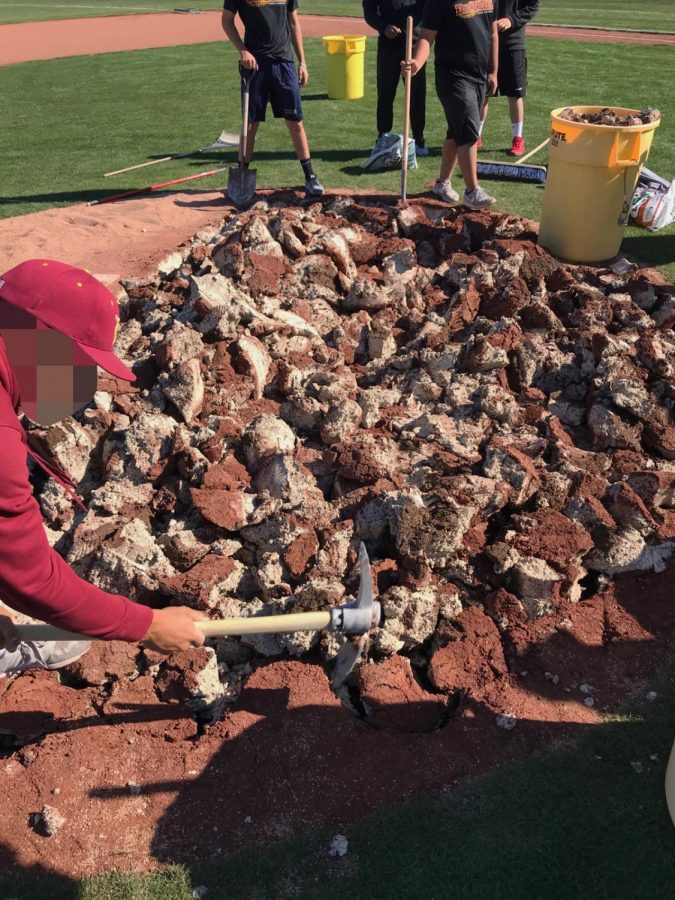
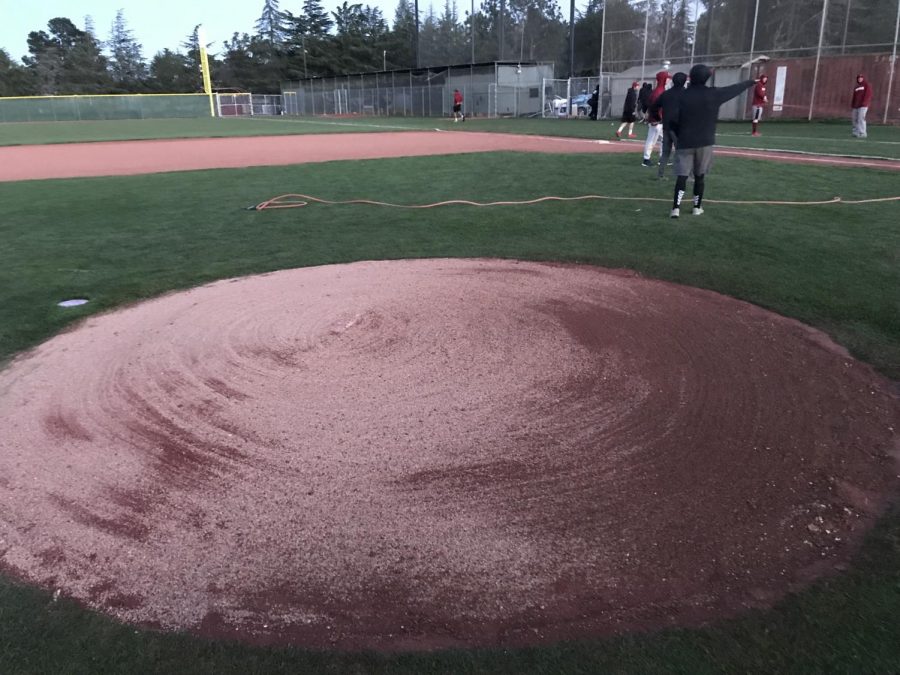
Forfeit and administrative response
Seven pitches into the first game on Feb. 24, athletic director Kulwant Singh came out of the right field dugout and told Raich that the team had to forfeit the game.
“It was the most embarrassing moment I’ve ever had in my baseball career,” freshman utility player Sean Rooney said.
The athletic director had nothing to say on the matter. In a response to a request for comment, Singh wrote: “I am not in the loop as far as facilities. I really cannot answer your questions because I don’t know.”
In response to a follow-up request, he added: “I am a facility coordinator in the Athletics Director position. I have no information that I can provide to you.”
In an email to parents, Murphy accounted for the forfeit. “Several players and coaches – including the head coach—[have] essentially destroyed the pitching mound,” he wrote. “I made the call to stop play, as we could not vouch for the safety of the field, and the idea of a player breaking a leg on turf that had been damaged, or falling across the ‘new’ pitcher’s mound, was not acceptable.”
By Monday, Feb. 26, the baseball team had shrugged off the forfeit and was looking ahead to the next day’s match-up with Skyline College when they received the news that Raich had been placed on leave, which caused havoc within the locker room. Former coach Scott Hertler was named interim head coach.
Raich’s role
Pitching coach Buchman said that Raich was helping an injured player while assistant coaches and players replaced the clay.
“They’re trying to pin things on him that have nothing to do with him. They know they made a mistake,” Buchman said.
Assistant coaches and players corroborated that Raich was not present for the overhaul of the mound.
According to them, Raich was at the field initially and understood some work needed to be done to right the “landing strip” on the pitcher’s mound, but was not aware of the full extent of the renovation.
“They [administration] did not take the proper channels to see what happened,” Buchman alleges.
“He [Raich] was not there at any point during the entire situation. He was not present. The way they [administration] did not speak to the assistant coaches or the players and really did not get the full story on what happened, to me does not seem appropriate.”
Administrative dismissal of safety concerns
Much of the baseball team’s concern lies in the administration’s apparent disregard for their safety.
Per Buchman, the team “had no reason to believe that [they] were not supposed to prepare the field for play,” including taking safety measures necessary for play that would otherwise be routine if the field had been released from contract.
If there was any doubt about safety, or if the field was not legally deemed complete and released from the contractor to the school, the team believes they should not have been allowed to play on it.
“The field was not released to us. That really, to me, has nothing to do with Erick, because they either knew or they didn’t,” said Buchman.
Current comments from administrators do not acknowledge the implications of an improperly constructed mound, nor the possibility that a baseball staff member might have caught the mistake before it became a point of conflict, had they been a part of the approval process.
In her March 8 email, Spatafore stated that administration “would never have permitted the play of even a single game if safety were a concern.” Those who assessed the field obviously did not deem the pitcher’s mound unsafe.
Administration has not acknowledged that the act of reconstructing the mound was, in fact, to ensure player safety.
In his Feb. 27 email, Murphy refers to the mound’s apparent repair as “damage that was done to our previously pristine field constructed to industry standards.”
Baseball players and staff contend that the problem with Murphy’s comment occurs when considering the severity of injury that could have affected players from either team if the mound wasn’t fixed within the time period the administration had allotted for the field to be ready for the game.
“I have never heard of a school that would rather have their own students hurt themselves, so they can cover their own butts, than have a mound that is safe and playable,” said sophomore infielder Josh Longabaugh.
Status of the baseball field
Although the baseball team vouches for the safety of the reconstructed mound, which they had used for the first seven pitches of the Saturday, Feb. 24 game, administration is currently “waiting for pricing to reconstruct the mound,” according to Grey.
Grey said that a timeline for the baseball field’s opening “will be provided with the pricing.”
Since the field was “released to the District for all further maintenance” on March 8, it is unclear what reconstruction of the mound will entail.
In the meantime, the baseball team continues its second season without a home field.
An uncertain future
Players, parents and staff alike are concerned about recruitment prospects in the absence of Raich, who has helped 23 players move on to four-year universities in the last three years and is well-regarded as one of the best coaches in the area for moving players to the next level.
“I’m from Fremont, California, and there are bunch of other junior colleges that are near me, but I played for Raich over summer, and I really liked how connected he was with my future…that set him apart from all the other coaches,” Ramos said.
“Losing Raich affects me because I trust him to move me on to a four-year, and now, with him being put on leave, it puts my future in question.”
Throughout the process, parents of the student-athletes have been up in arms about the administration’s handling of the situation.
“The players and their parents have repeatedly explained to De Anza President Brian Murphy and Associate Vice President Marisa Spatafore how their abrupt action of suddenly and unfairly removing coach Raich is damaging the futures of the De Anza student-athletes,” said Jerry Nastari, a concerned parent.
The team has been with in contact with the administration to get their head coach back, and as the emails have been rolling in to Murphy’s office, he has taken leave.
Murphy met with parents on March 5 and said he would get back to them “within a couple of days,” but, per Spatafore’s March 8 email, went “out of town” for two weeks soon after the meeting without having responded to the concerned parents.
Players state that Raich was attempting to make De Anza’s home field safe for his players, whom he consistently calls his “sons,” and that they have been left seeking answers from an administration that, in their eyes, would rather see them unsafe and uncertain than working together to make their field a place where they can do what they signed up for: play baseball.
The team defeated West Valley College 14-13 Saturday to break a three-game losing streak under the leadership of Hertler, who was positive about his players’ prospects when interviewed Friday.
They await resolution regarding the use of their home field and the reinstatement — or otherwise — of their beloved coach.
Editor’s note: Matt Risko is a journalism student and starting pitcher on the De Anza College baseball team.



